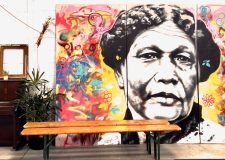Project Brighton: Bus operator explores cleanest fuel option for city

Bus operator Brighton & Hove Buses is currently trialling an electric bus on its number 50 route through the heart of the city in a bid to explore the right fuel options for the city in the short, medium and long term.
The performance of the small single-deck electric bus – known as a StreetAir and on loan from bus manufacturer Wrightbus based in N. Ireland – will be measured against the city’s topography, size of operation, frequency of service and passenger volumes.
Brighton & Hove Buses Managing Director Martin Harris said: “We are committed to the greenest energy for our operation so we’re really excited to see how the electric vehicle copes with the city and our customers’ needs.
“We do anticipate ‘electric’ forming part of a multi-pronged strategy for a sustainable transport system for the future. Right now we’re exploring exactly what those fuel options are.”
The number 50 bus route, which runs from Churchill Square to Hollingdean every 12-15 minutes, was selected for its hills, its relatively short five-mile route, passenger volumes and proximity to Lewes Road depot in case of breakdowns.
Passenger volumes in Brighton & Hove are the largest outside London and as such the bus operator’s busy routes mostly require double decks. But electric double decks are still in development. Also operating days are long, services are frequent and the streets are hilly.
Let’s not forget that any public transport journey is greener
Martin added: “A full-size single deck can do 120 miles a day but the electric bus single deck StreetAir can only do 50-60 miles a day. These are the sort of things we have to seriously consider.”

The operator is also looking into the infrastructure needed for a full electric operation such as the current electricity supply capabilities of their depots and the work and costs required to convert each one so they’re compliant.
Brighton & Hove Buses is committed to increasing zero emissions capabilities and improving the efficiency of engines and reducing the carbon impact of fuel.
Recently the Society for Motor Manufacturers and Traders has been calling for faster take-up of cleaner diesel buses in London to help clean up air pollution.
Brighton & Hove Buses has already invested millions in state-of-the-art highest standard Euro 6 clean buses – at a cost of £200,000 each – which reduces NOx emissions by a staggering 99 per cent. Currently Brighton & Hove Buses has 48 of these buses on the road but by this autumn there will be 82 of them in operation. The majority of these buses will have stop start technology which reduces fuel consumption and emissions.
What’s more the company has converted 86 of its other buses to lower emission technology and has phased out all higher emission older standard Euro 3 vehicles. And Brighton & Hove Buses is consistently ahead of the city’s lower emission targets.
Martin said: “Let’s not forget that any public transport journey is greener. Buses reduce congestion and noise. They’re also more convenient, less stressful and improve many people’s mobility.
“A healthy bus operation is vital for continued economic growth as it’s a great support to business. It helps to make labour markets efficient and workforces mobile.”




















